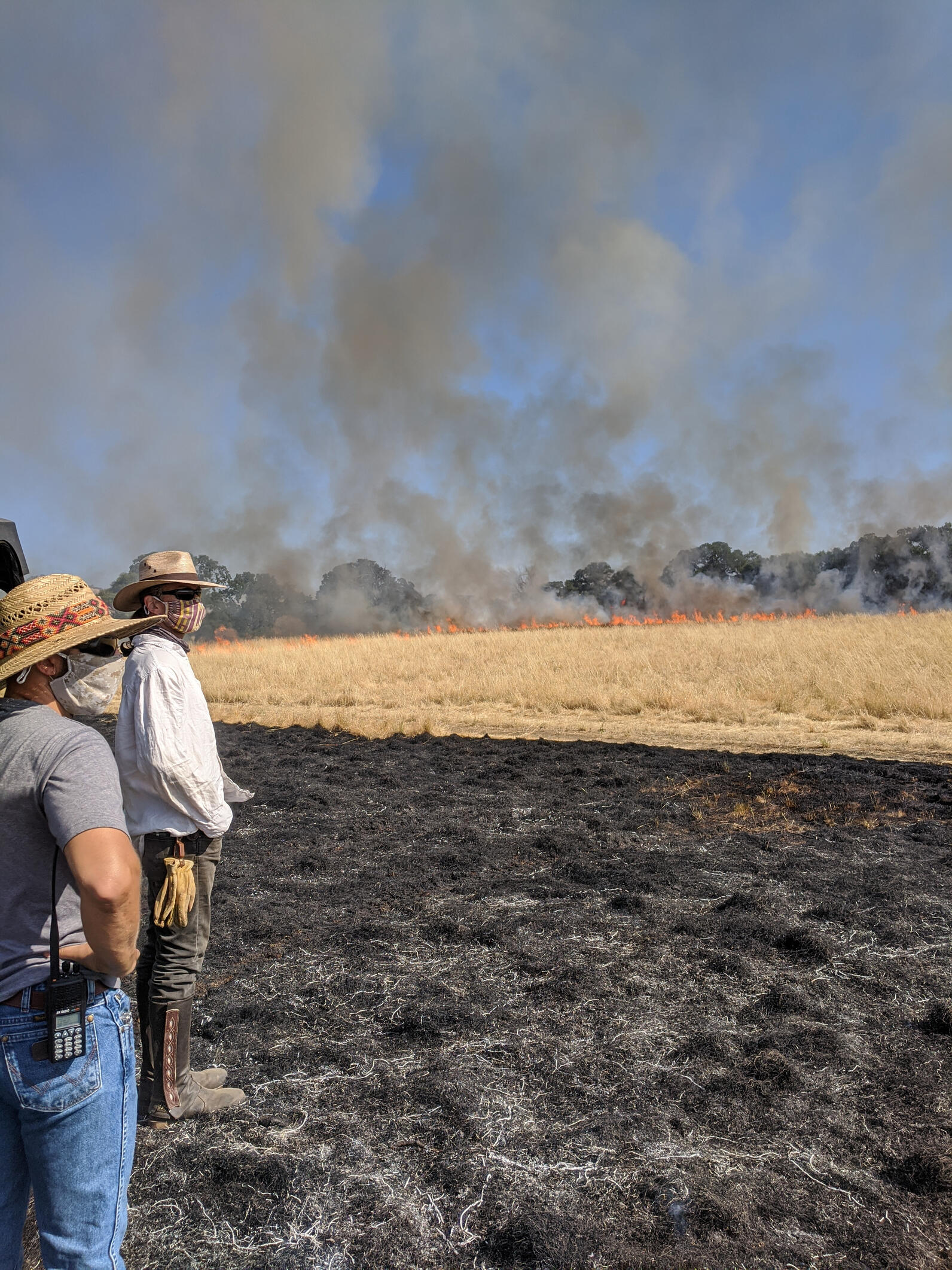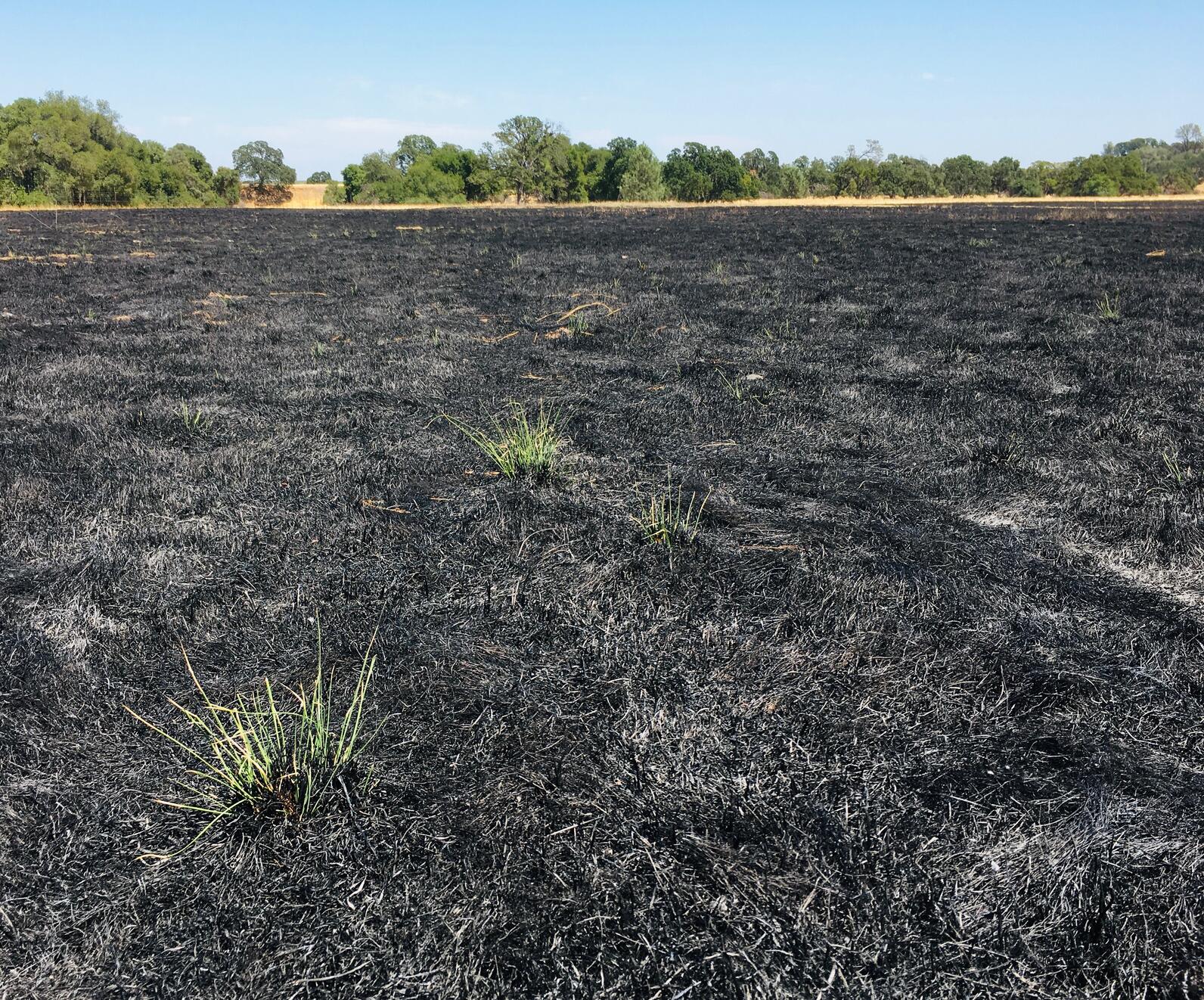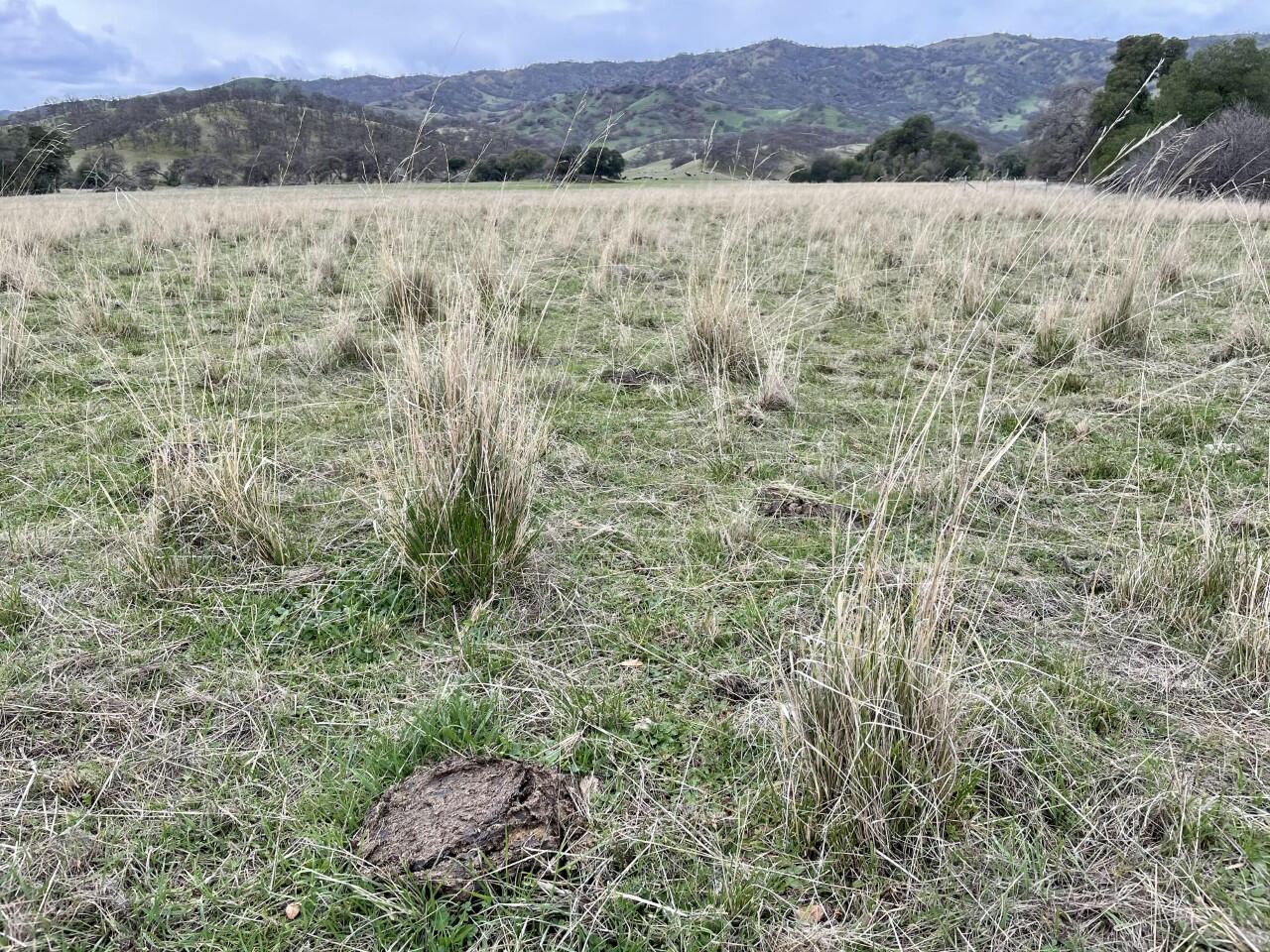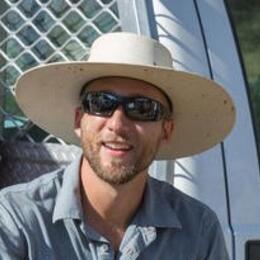If annual, non-native, and invasive grasses have a strategy for success, it is certainly, “the early bird gets the worm.” Annual non-native grasses come up hard and fast early in the growing season, utilizing winter sunshine and mild daytime temperatures to get a head start in front of later emerging native bunchgrasses.
Since Spanish colonization introduced these invasive species hundreds of years ago, non-native, annual grasses have taken over and displaced more than 99% of California’s native grasslands. This shift in species composition affects native birds previously dependent on the native grassland ecosystems they evolved in. While efforts to manage annual, non-native species are admirable (mowing, herbicide, manual pulling), they remain costly and do little to maintain or build soil health.
At Bobcat Ranch, California Audubon’s 6,800-acre blue oak conservation sanctuary near the town of Winters in Yolo County, two primary tools are utilized to manage non-native, annual grasses and to build soil health – outcomes that are ultimately beneficial to maintaining healthy populations of grassland birds: prescribed fire and timed grazing.
Prescribed Fire
For millennia, the Indigenous people of California have been using fire as a critical tool to maintain their landscapes, foods, and culture. However, early colonization banned the use of fire by Indigenous people – greatly altering the landscape and culture.
Thousands of years of annual burning in a mosaic across California’s grasslands had produced landscapes and ecosystems that evolved to thrive in the presence of regular burning – including the bird populations dependent on them. Since 1968, when the United States National Park Service lifted its familiar “Smokey the Bear” policy aimed at fire suppression, there has growing recognition of re-introducing prescribed fire and its value to our grasslands ecosystems.
At Bobcat Ranch, prescribed fire has become our primary tool for managing non-native, invasive annual grasses, reducing fuel loads to combat wildfire risk and severity for surrounding communities, and managing to favor native grass, wildflower, and bird populations. Using our local fire history records as a prioritization tool (1935-Present) we have established annual re-introduction of prescribed fire to our grasslands through a partnership with CalFire, our California statewide fire agency.
This past June, we conducted several burns with CalFire, local fire departments, and the regional Yocha Dehe Tribe’s fire department, totaling over 300 acres.

Some of the areas burned had not experienced fire for nearly 100 years. After only a few months (even during record mid-summer temperatures!), we saw native bunch grasses emerging out of the blackened landscape at the controlled burn site.

Safely conducting early summer or fall season prescribed burning can reduce suffocating thatch, which happens when years of grass build up into a dense blanket covering the ground and stimulate the growth of the fire-evolved native bunchgrasses. This gives them just the head start they need to compete with annual non-native grasses. Additionally, low-intensity burns return vital nutrients to the soil and reduce the annual seed bank deposited by non-native species on the surface following maturation and dropping of seeds the previous spring.
While we will not be able to completely eliminate the non-native, invasive annual grasses from California, we can use prescribed fire to give native plants and the species that rely on them a chance to come back.
Timed Grazing
Not only have California grasslands co-evolved with the regular use of fire, but they have also developed in tandem with the impacts of grazing (e.g., defoliation, dung, urine, hoof impact) by large herds of ungulates. Prior to European colonization, massive herds of antelope and elk moved across the landscape, similar to the magnificent herds roaming the African savanna. Extirpation by colonizers and steady loss of habitat to agriculture and development have led to the near-extinction of California’s antelope herds, and a great reduction in elk populations and range. While some efforts to re-introduce elk and antelope have been successful, significant barriers to re-introduction remain - leading some conservationists to mimic historic grazing through managed cattle herds.
Recent press targets grazing for many environmental problems (scape-cattle, perhaps?). However, scientific research around the subject has incrementally led to the understanding that it’s not the cow, it’s the how. In other words, cattle are not the problem – it's how cattle are managed that can lead to the exacerbation of many well-documented environmental issues.
Emerging programs like Audubon’s very own Conservation Ranching Initiative aim at promoting better management through incentive, ultimately leading to an “Audubon certified” seal on beef raised or finished on land enrolled in the program. Our program limits the use of feedlots, antibiotics, and hormones, neonicotinoids (among others), while promoting better management practices, like rotational grazing, fencing out waterways, and timed grazing. Programs like this can lead to the establishment of practices beneficial to birds, wildlife, soils, and ecosystem health.
In addition, cattle ranchers can benefit from a premium on the beef market with the use of the Audubon certification seal and increased productivity of their rangelands via the enhanced health of the grassland ecosystem their cattle depend on.
At Bobcat Ranch, the first certified property in California Audubon’s Conservation Ranching program, timed grazing has become a key tool for better management of cattle on areas of the Ranch that have especially high densities of native grasses. In late winter/early spring, annual exotic grasses begin to emerge, while native bunchgrasses tend to lag behind – a perfect time to use large herds of ungulates to graze down the early growth of the annuals.
If timed well, utilizing a high-density (many animals per acre), short-duration “pulse” of grazing, cattle can effectively “weed” out the annual grasses and give the later emerging native grasses a chance to compete. This winter, this is beautifully evident in Maxwell Flat, an 80-acre complex of fields restored primarily to native grasses in 2007 with the help of a grant from the California Wildlife Conservation Board.

Conclusion
While there are many tools at the hands of conservationists and land managers, timed grazing and prescribed fire can be very effective at maintaining the spread of annual exotic grasses, benefiting native grasses and birds, and building soil health. Now, through programs like Audubon’s Conservation Ranching Initiative, consumers can directly affect the better management of our grasslands through the purchase of certified products. To learn more about Conservation Ranching, or Bobcat Ranch, follow the links below:





